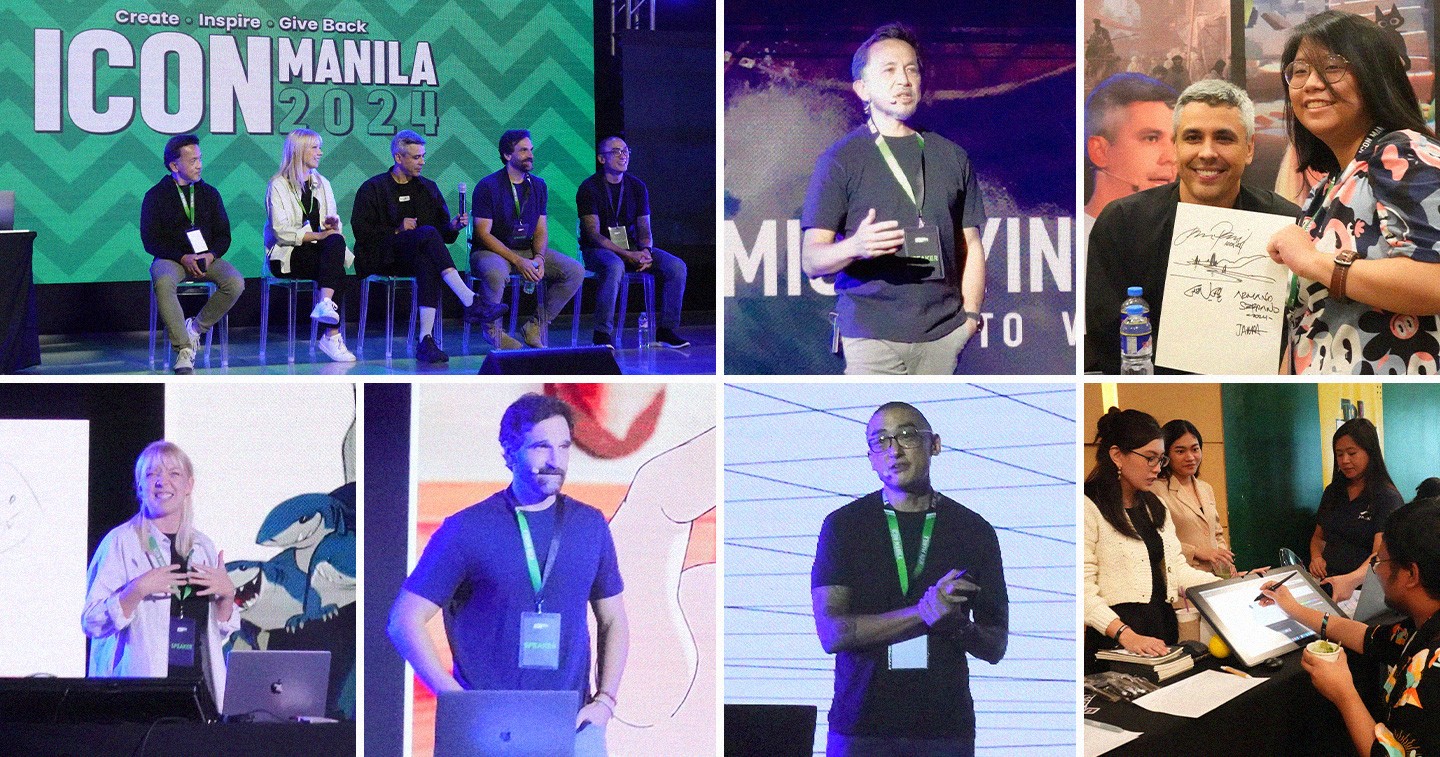MANILA, PHILIPPINES — Creatives and animation enthusiasts gathered at ICON Manila 2024, an animation conference held from September 19 to 20 at the Samsung Hall in SM Aura, Taguig City. After its significant return in 2023 from disruptions caused by the Covid-19 pandemic, the creative conference continued its tradition of uniting creative minds in animation, film, games, illustration, and visual effects.
Animation veteran Armand Serrano and his wife, Bing Serrano, launched the conference in 2012 with a mission to inspire, create, and give back to communities in need. Every year since then, the conference has expanded its partnerships roster with organizations such as the Animation Council of the Philippines and schools such as the De La Salle—College of St. Benilde, University of Sto. Tomas, University of Makati, and more. This year, the conference raised funds for the CRIBS Foundation in Antipolo.
With notebooks and pens in hand, attendees eagerly absorbed insights and inspirations from this year’s lineup of speakers:
- Armand Serrano, Production Designer, Visual Development Artist, and Art Director
- James Paick, concept artist and Creative Director at Scribble Pad Studios
- Shannon Hallstein, character designer and visual development artist
- Jama Jurabaev, Concept Artist at Lucasfilm
- Gaston Ugarte, Set Supervisor and Art Director at Pixar.
Artists: Composers, maestros, and storytellers
“We are not just artists; we are storytellers,” Armand emphasized during his talk titled “Composition: Key to Visual Storytelling.” He provided an insightful overview of composition — an essential principle in animation — by highlighting four key components: perspective, color, values, and staging.
“The key to effective artwork is the story, the idea, and the emotion you want to convey,” he added. Using Star Wars musical themes and visuals, Armand engaged the audience by illustrating how proper visual storytelling allows artists to guide viewers’ attention. “Remember: you are the composer, not the audience,” he advised.
Environment design: It’s like a good hamburger
James Paick likened environment design to cooking. “I need a recipe; I need something to follow,” he explained.
Sure enough, James got the audience hungrier as he compared a great environment design concept to a good hamburger. He identified five essential elements for creating a compelling environment concept art, namely: camera perspective, composition, journey, lighting, and points of interest.
Further into his talk, James demonstrated his creative process, which the audiences were fascinated by. He started by establishing perspective grids and drawing basic shapes to define composition. He then emphasized the importance of simplicity in design: “This whole convention is about getting back to the basics; creating these exercises allows us to be more focused on smaller parts.” He then encouraged artists to embrace exploration while maintaining a solid understanding of techniques. “Artists should always try to reinvent, move, (and) shift.”
Bringing story-driven ideas to life
Shannon Hallstein, who started as a traditional artist before branching out into digital art to adapt to industry standards, shared her root inspirations from animation studios like Studio Ghibli and art movements like early Romanticism. Her work emits an adventurous and fantastical spirit, with each original character presenting evident personalities and exciting backstories.
“Being an artist is really about selling ideas,” she remarked. “(And) the stories of our characters can be a part of that.”
In her talk, she shared how she conceptualizes original characters, from word associations to real-life references, and mentioned Pixar’s popular conceptualization technique — the question of “What if?”
“The reality of creating concept art is that it’s messy, and that’s alright,” Shannon pointed out. “The real design process can be more complicated and involve more loops, but going back to certain steps in your process can allow you to provide more depth to the character/concept.”
“The world around you is the best teacher. Take time to watch, see, and learn how people around you look and behave,” Shannon concluded.
The joy of 3D concept art, and the joy of creating
Several attendees Jama Jurabaev expressed his enthusiasm for concept art during his presentation. “3D is a tool that will take me somewhere as fast as possible,” he stated. His excitement resonated with attendees as he demonstrated how design should always drive artistic decisions.
While the audience intently watched Jama create breathtaking art, he expressed that he can’t believe he gets to make these simple shapes for a living. Just the very thought of it makes him grin.
“Don’t be afraid of 3D,” said Jama. “Overall, the idea, even on a simple, basic level, you can do a lot of things. Just make sure it’s always design-driven.”
“I remember [starting out] was difficult for all of us,” Jama shared during the Q&A, mentioning that he would lug around his clunky laptop from work just to paint at home. “I understand that loving is not enough cause you have to work, but [creating something lovingly and consistently] is a snowball effect. As long as you keep doing it, it keeps getting bigger and bigger, and at some point, nothing can stop it.”
Crafting limitless worlds at Pixar
“What drives our movies? Story is king. Everything we do revolves around the story,” Gaston emphasized.
He brought the audience behind the curtain, unveiling several behind-the-scene moments and WIPs of his 3D models for some of the most iconic Pixar films, such as Toy Story, Lightyear, Inside Out 2, and Luca.
When the audience got curious on how he was able to complete such large-scale, intricate projects, he shared: “It’s always about finding ways of getting things done. This is what I love about my job: it’s always changing and there [are] always different challenges to tackle.”
Further fueling the crowd’s ambitions, Gaston inspired the crowd by telling them that if he, a small-town guy born and raised in Argentina, who applied for Pixar three times before he got in, can make it, then anybody can. “Passion, practice, self-awareness, and confidence is key.”
adobo Magazine is an official media partner of ICON Manila 2024.








